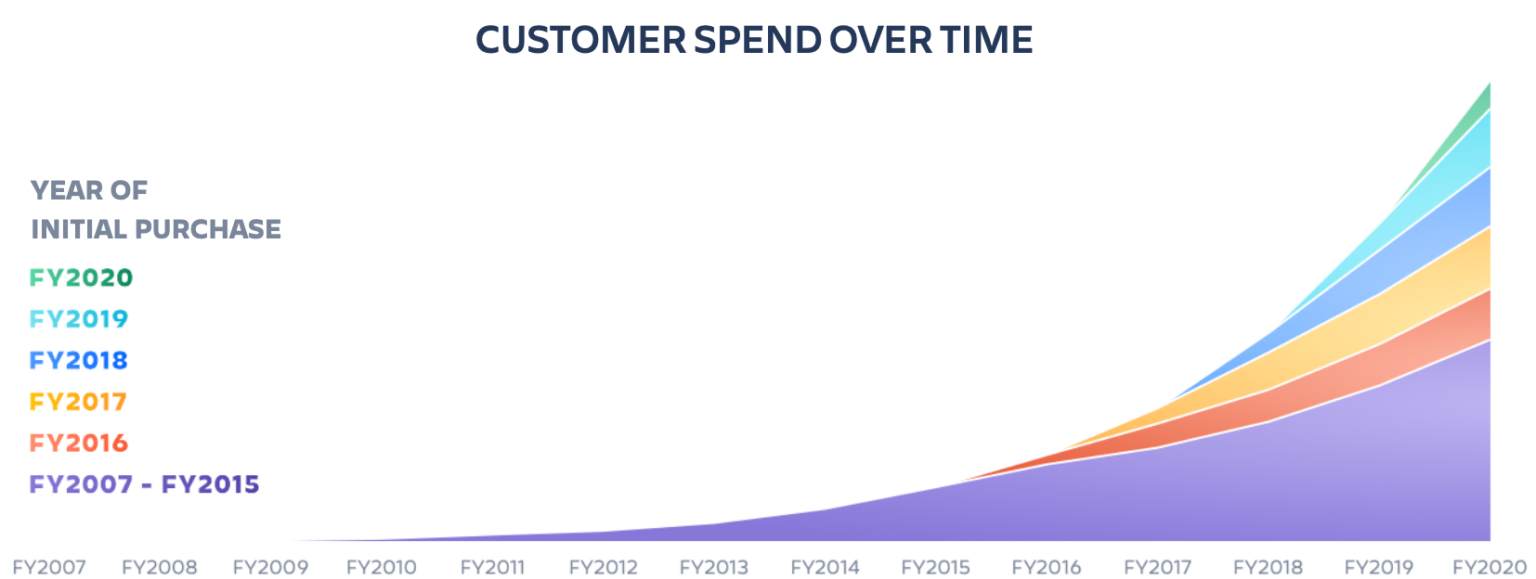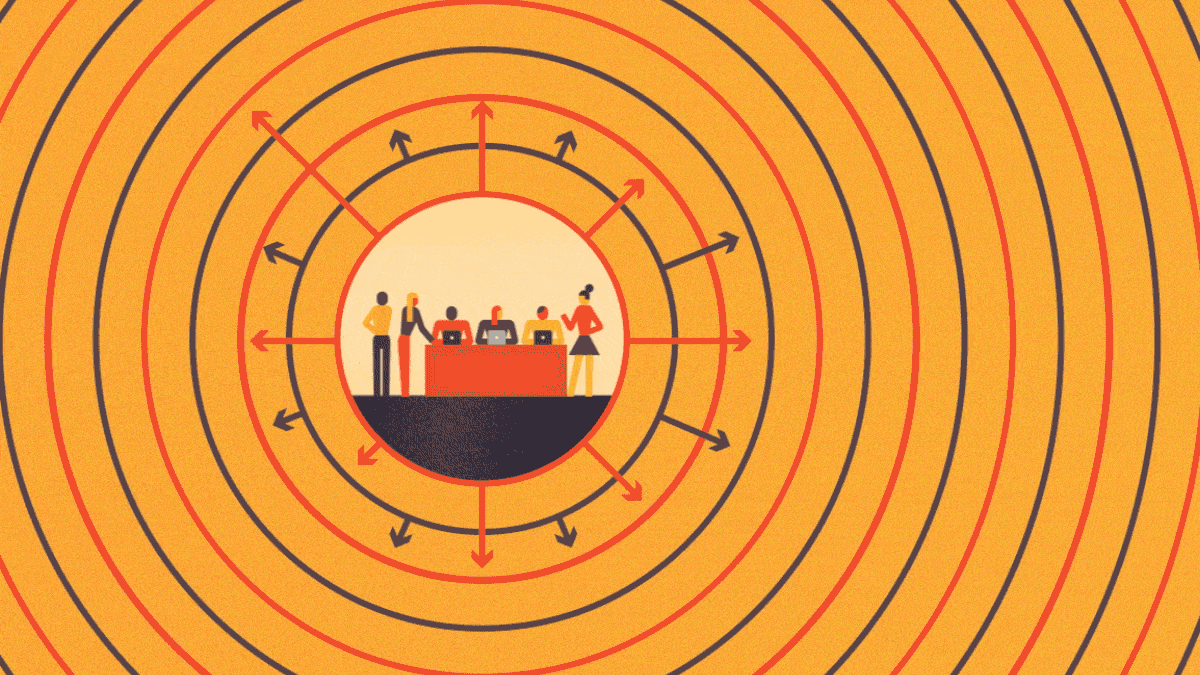How growth levers help your business go the distance
Expanding your relationship with each customer is key to building a company that stands the test of time.
5-second summary
- For B2B companies, expanding their relationship with each customer is vital to growth and stability.
- Flywheel companies can expand using levers like cross-sell, upsell, marketplaces, and more.
- Which levers you pull, and how hard you pull on each one, should (ideally) be informed by data around customer behavior – but gut feel is a decent substitute when you’re just getting started.
This article is part of our series on using the flywheel model to grow your business. Check out the complete collection here.
This year marks Atlassian’s 20th year as a company. In the tech world, that’s some respectable longevity. But this moment was far from inevitable. If our co-founders had gone with a traditional B2B sales model instead of a self-serve purchase experience, we may never have gotten off the ground. If they’d focused on a single product instead of building a multi-product portfolio surrounded by a robust ecosystem of apps, we may have been folded into a larger company by now.
Now, there’s nothing objectively wrong with being acquired or merging with another company. That said, if you’re a founder determined to build a company that stands on its own over the long term, you have to master the art of expansion (among other things). And I don’t mean expanding the size of your customer base, although that’s obviously imperative. I mean expanding your footprint inside each customer’s walls.
Think of expansion as a series of levers. The more levers you can pull, the more ways you can provide value to your customer base and thus increase your “share of wallet” within each customer. Today I’ll take you through the ins and outs of five expansion levers Atlassian reaches for, as well as offer tips for navigating the complexities they introduce into your business.
But first, why do expansion levers even matter?
There are plenty of companies that succeed on the strength of one product. They land a 7-figure enterprise-wide deal with a new customer, then bring in armies of customer success managers to ensure the product gets used. If they do their job correctly, demand for the product goes beyond the current licensing agreement, and upon renewal, and after much negotiation, the customer purchases more seats.
In other words, the relationship between the customer and vendor is determined by one big decision every few years. It’s a “land, and land, and land again” approach.
By contrast, the flywheel approach of “land and expand” means starting with a modest initial sale that is tailored to the customer’s needs today (versus inflated in anticipation of hypothetical future needs). Then you gradually expand the relationship by selling them more user seats, products, and services over time. But only when they’re ready. Patience is key.
Having worked with both approaches, I think “land and expand” has the edge.
From your customers’ perspective, they’re receiving value at the same time they’re paying for it. They don’t make a huge up-front purchase that includes loads of user seats and functionality they don’t need right now, which means there’s little to no risk. In fact, at Atlassian, we offer free versions of all our products, ensuring that customers experience value from our offerings well before they have to pay us. This has a positive effect on customer satisfaction and loyalty because risks make customers anxious. Anxiety amplifies any negative experience they have with you or your product. And negative experiences tend to be remembered when they’re deciding whether to renew.
From your perspective as a business, you have more consistency in your revenue stream and more predictability in your financial modeling. Instead of lying awake at night stressing over whether those few big deals are going to come in to make the quarter, you can rest easy watching the hundreds, or thousands, of small expansions your customers make over the quarter.
Not only that, but if you use your expansion levers artfully, the bulk of each customer’s lifetime spend (and therefore, your company’s revenue) will come from these secondary sales. While landing new customers sets you up for a bright future, expanding with existing customers is what puts money in the bank today and ensures you’re still around when that bright future arrives.

Top five expansion levers for B2B SaaS companies
Depending on the nature of your business and what stage of growth you’re in, these levers may or may not make sense for you. But this first one applies across the board.
#1: User seats
Chances are, you’re going to land with a single team or department inside your customer’s organization. Great! The more broadly applicable your product is and the more value it delivers, the faster you’ll spread to more teams and eventually go wall-to-wall inside their org.
The caveat is that this is the lever you have the least control over. It’s generally harder to bring in new users than to convince existing users to use more products or pay for premium versions of your products. But you can speed up user adoption by investing in a growth team whose mission is to make your product go viral; eliminating barriers to adding users with flexible licensing policies; and improving word of mouth within your user base through programs that improve your CSAT and NPS scores. For example, one of Atlassian’s most successful tactics is per-user pricing combined with the ability for admins to add more seats with just a few clicks.
#2: Upsell
As your offerings mature and your customer base becomes more diverse, the needs of your customers will diversify as well. While simple pricing is a basic tenet of building a flywheel business, the divergence in customer needs presents an opportunity. If done correctly, with much research and testing, you’ll have the opportunity to build different editions of your product with different sets of features, providing another expansion path. Atlassian offers a full ladder of editions of our cloud products – Free, Standard, Premium, and Enterprise – which gives us multiple avenues for upsell. Here too, we let admins self-serve their upgrade from within the products.
However, I caution you from choosing this path too early in your product’s lifecycle. If your business model becomes too dependent on revenue from the more expensive editions, it’ll be tempting to spend more and more time building features just for those editions. Pretty soon, you won’t have anything appealing in your basic editions that can attract new customers, and your business will slow.
#3: Cross-sell
If customers are happy with one of your products, they’ll be twice as happy with two of them, right? Obviously, that’s not quite how the math works, but that’s the general idea.
As long as you’re delivering high value and high quality, you’ve got a good shot at getting your customers into additional products because you’ve already built trust with them. Becoming a multi-product company is easier said than done (worth an article of its own, if not an entire book), but it’s one of the few commonalities among the largest enterprise software companies in the world.
Along with traditional cross-sell tactics like email marketing and targeted advertising, many SaaS companies (including Atlassian) build recommendation engines that surface messages inside their products encouraging users to try another product. If you’re showing the right message to the right person at the right time, this is incredibly effective. (More on what “right” means later.)
#4: Marketplace
If you’re doing a good job of focusing on the most common use cases, and a good job of landing lots of new customers with your frictionless self-serve flywheel, it won’t be long before you get requests for specialized features. Rather than satisfying niche use cases yourself, consider building capabilities to allow customers or partners to customize your products. And if that takes off, you might consider launching a marketplace where these customizations (apps) can be shared and purchased across your customer base.
When you let people customize your product, they are instantly more invested in it. The Atlassian Marketplace generates revenue directly from app sales, as well as indirectly via renewals – once a customer adds an app, their retention rates go through the roof.
#5: Training and professional services
Your product may not be mission-critical to entire companies, but I bet it’s mission-critical to specific teams. And I bet those teams are willing to invest in training that helps them get even more value from it. If you are mission-critical to the whole company, you’re in a good position to offer other services like premium support packages or technical account managers who advise customers on best practices for using and administering your products.
Navigating the complexities
Congratulations! You’ve built a collection of expansion levers to pull. Now comes the hard part.
For every expansion lever, there will be a team responsible for maximizing it. And every one of those teams will want access to every customer. But you can’t overwhelm them with marketing messages or they’ll simply stop listening.
As a company with over a dozen products, Atlassian knows this pain well. In our early years, we didn’t have heaps of historical data around cross-sell and upsell to analyze. We had to make strategic bets as to which customers to market to, what they were most likely to buy, and how often to contact them. Marketers for each product would gather in a conference room with our email team and make the case for why they should be able to message customers that week. It was like “The Hunger Games” without the bloodshed.
Now, we analyze historical data around cross-sell and upsell to create granular customer segments we can target with precision messaging – “Jira Software customers with 1000+ user seats who’ve been with us for at least three years and haven’t tried Confluence,” for example. This is much more effective than making educated guesses. The sooner you can use data to drive your expansion efforts, the better.
The other thing is that different levers affect your revenue in different ways. So as you experiment with each lever, you need to track how it affects your financial model. When you can see that X% of your revenue comes from cross-sell, Y% from training, and Z% from upsell, you’ll know which levers to prioritize.
Expand with heart and balance 
As always, values will be your guide. For us, it comes down to our “Build with heart and balance” value (with a dash of “Play as a team” and “Don’t @#%! the customer” as it relates to marketing additional offerings.) The expansion journey is like walking a tightrope. How hard do we pull on one lever relative to another? How often can we reach out to customers about additional offerings without overstepping? How much effort do we put into expansion as opposed to new customer acquisition?
Looking at the numbers goes a long way when you’re trying to balance all these factors. But when you’re starting out and don’t yet have terabytes of data to inform your decisions, you have to rely on instinct – your heart. Listen to the feedback you get from customers, incorporate that into your experimentation process, and trust that the revenue will follow.
Hungry for more? Check out the other articles in this series.
Thanks to Sarah Goff-Dupont for her contributions to this piece.












































